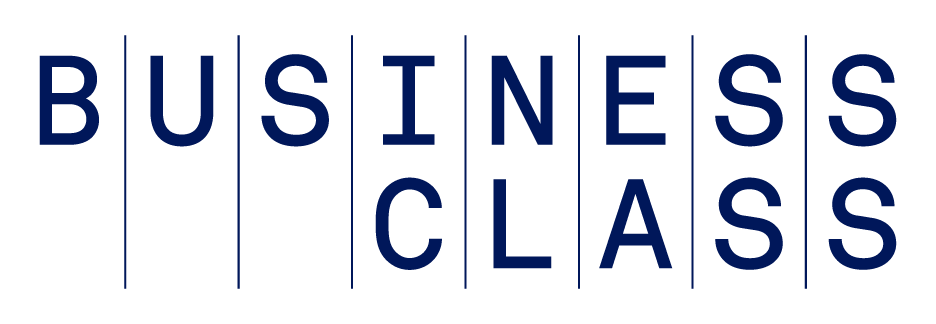Business development can be one of the fastest ways to grow your business. It can also be one of the most time intensive. It typically requires focus, planning, stamina, and doggedness. Doing it right may pay big dividends; doing it wrong can be demoralizing.
Here are a few tips for effective business development that can help you hit the ground running.
9 Ways to Improve Your Business Development Strategy
1. Know your competition.
It may not be enough to know the names of your competitors. Evaluate what they offer so you can help differentiate yourself from the pack. As the adage goes, don't define yourself by your competition. Analyze what makes you stand out in a crowd. You should obsessively work on this differentiation. This may be your most powerful business development tool.
2. Add value and build trust.
Rather than going after people's wallets, consider going after their hearts. Business growth can come from adding value to every relationship, with prospective customers and existing customers. We can add value by providing information and knowledge, by being an advisor, by obsessing over treating customers right, both before and after the sale, and by having a reputation for great execution and white glove service.
This mindset and approach builds trust and goodwill, which are your calling card for business development. But building trust takes time. As Seth Godin writes in his 2008 business leadership classic Tribes: We Need You To Lead Us, "People don't believe what you tell them. They rarely believe what you show them. [...] They always believe what they tell themselves." It's your public persona and your actions over time that will likely influence what people tell themselves about you.
3. Use testimonials wisely.
Testimonials can be a crucial part of establishing credibility in the initial stages when you court a new prospect. It can help to know a few tips in this area. For example, it may not be effective to use "one-size-fits-all" testimonials. Rather, you should tailor your testimonials to your prospective target. If you're dealing with a mid-sized company, for example, you should use testimonials from other mid-sized companies you've done business with, rather than from your largest customer. This taps into a fundamental principle of human behavior referred to as the Consensus Principle or Social Proof: We feel more comfortable in making a decision when the source of the information comes from people similar to us.
Also, beware of inundating your prospects with a large number of testimonials. It could look as though you're protesting too much. Only use testimonials that are authentic and have the ring of truth. Sometimes, when asking for a testimonial, the person writing it does so reluctantly to please you, but their heart is not in it. You can end up with a perfunctory, factory-style testimonial that savvy clients will quickly see through.
4. Keep an eye on online reviews.
Consumers often turn to online reviews to decide whether or not to do business with a local company. A 2021 survey by BrightLocal (based on the views of a representative sample of 1,124 U.S.-based consumers) shows that when browsing for local businesses, 77% of people 'always' or 'regularly' read online reviews.
Use Google Alerts or content monitoring services to track and respond to these reviews when necessary. It can help show that you care about your business and about the people who use your services or products. A caring attitude may engender goodwill and attract new business.
5. Ask for the business.
After you've met with your prospect, submitted the proposal, done all the due diligence, and followed up, consider closing that phase by unabashedly asking for the business. Try a simple: "I would very much like to provide this service for your company. What will it take to get started?" This "let's do business together" approach is direct and honest, and can signal your confidence in the value of your service or product. It's refreshing. What's more, it can give your prospective client the opportunity to decline. It may be better to know this so you can refocus your energy and attention on the next potential customer.
6. Pay attention to your website.
Have you let your website slip? Does it look like it was designed a decade ago? In this visual world, design matters. It's fair to say that most of your customers may start with your website. A tired looking site will almost certainly result in missed opportunities. At a minimum, you can add a video to showcase what you do.
As for your content, your website may not thrive if it just provides information about who you are and lists your products and services. Consider rewarding visitors who land on your site with ample free resources, information, knowledge, and tools to help them succeed. Make it easy for them to share the resources with others without having to fill out forms or deal with constant pop up windows and other annoying interruptions. This is passive business development that will possibly pay dividends and doesn't cost you anything.
7. Don't let relationships go cold.
Many business sales gurus emphasize the importance of repeat customers. It may pay to focus the bulk of your business development efforts on strengthening relationships with existing customers. Value the relationships and keep your loyal customers engaged.
There are many ways to engage with customers periodically. Consider using alerts to monitor the web for news about your clients, so you can know what's happening in their world and react as you see fit. Share useful content on a regular basis. Send a note on special occasions such as birthdays or anniversaries. Connect with your clients on social media and keep in touch with them with “likes” or thoughtful comments on the items they post. There's no exact science on how often you should connect with a client, but one rule of thumb for maintaining top of mind awareness with your clients is to show up on their radar once a quarter. You can also engage with clients peripherally by establishing your own social media presence.
8. Beat your competitors to the punch.
Another piece of prevailing sales wisdom is that buyers often choose the vendor that's the first to respond to them. Inertia is not your ally. Make your staff aware that business development is everyone's business so that a prospective client receives a swift response. Speed can make the difference between winning and losing.
9. Sharpen your business development skills.
Hone your skills in business development. Today, there are many convenient options for busy leaders to develop their skills in this crucial area of business success. For example, you might join an online class, download a business development app, or register with a business development association in your area.
How To Create a Business Development Strategy for Your Business
The objective of a biz dev team should be to find prospects, nurture that relationship, and escort leads towards sales teams to close the deal. For each of those three steps, there are many ways to achieve business development goals.
Finding Prospects
There are plenty of services that promise qualified leads. But don’t overlook the power of your own network. Mapping your business's established network through social platforms or using tools to scrape emails and connect names to company org charts can be an initial data-led approach. You can also use manual search to identify needs across your industry's landscape to discover new leads. Comment marketing—the practice of responding with helpful answers in active online communities—can be a great way to demonstrate your expertise to potential customers.
Nurturing Leads
Nurturing leads means keeping in regular communication, whether in person, over the phone, or through emails. Whatever your strategy, keep it personalized to the leads' preference, including how often you reach out. Be sure to track the amount of contact you make, so you don't risk forgetting a lead or exhausting them with your sales pitch. Consider setting up regular calls simply to discuss their current challenges and needs at work, and be prepared to provide guidance beyond your company's core competencies. After all, an effective business development leader isn't just selling, but is working to build trust and authority that the lead can rely upon. When that level of trust is reached, you'll have a higher chance to bring your lead into the sales funnel, where your relationship will serve as the foundational element.
Connecting Leads to Your Sales Team
The final step in the business development cycle should poise your sales team for an easy win. Your understanding of the client's need will shape the pitch, where even your personal understanding of your target can help set the tone and pace of the proposal. While your goal is to advance a lead to sales, your work with the client should mean only qualified leads—those matching client need with your business's products and services. Staying abreast of the industry in parallel with your lead's conversations about their needs supports the idea of a full business development cycle. And once the lead earns a sale, your relationship with the lead continues—especially when they move roles to different parts of their business or find a new job. Your personal connection to the lead will push them back into your business development strategy.
A version of this article was originally published on September 22, 2015.
Photo: American Express






